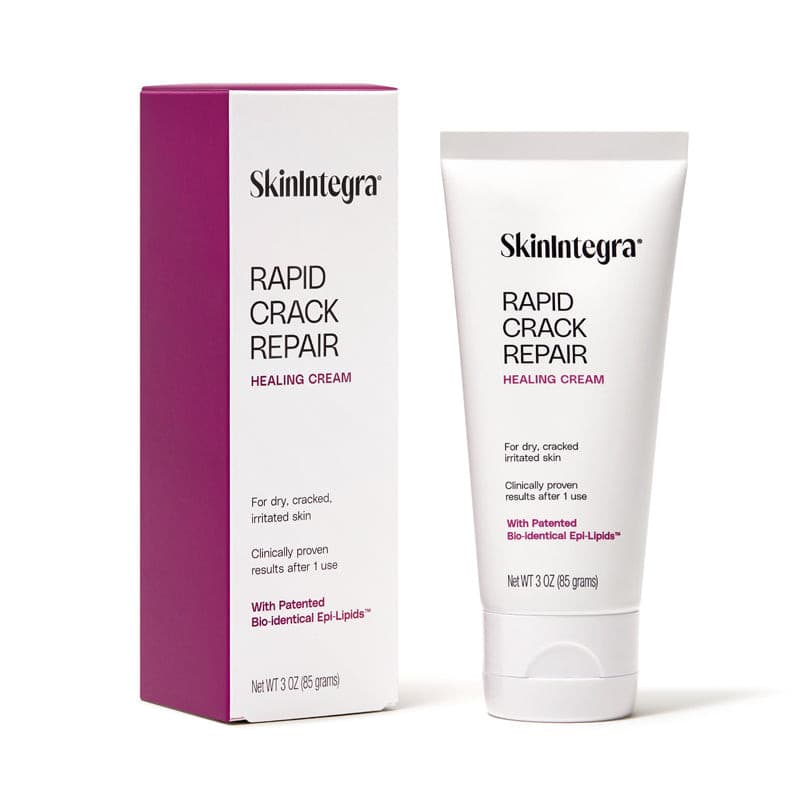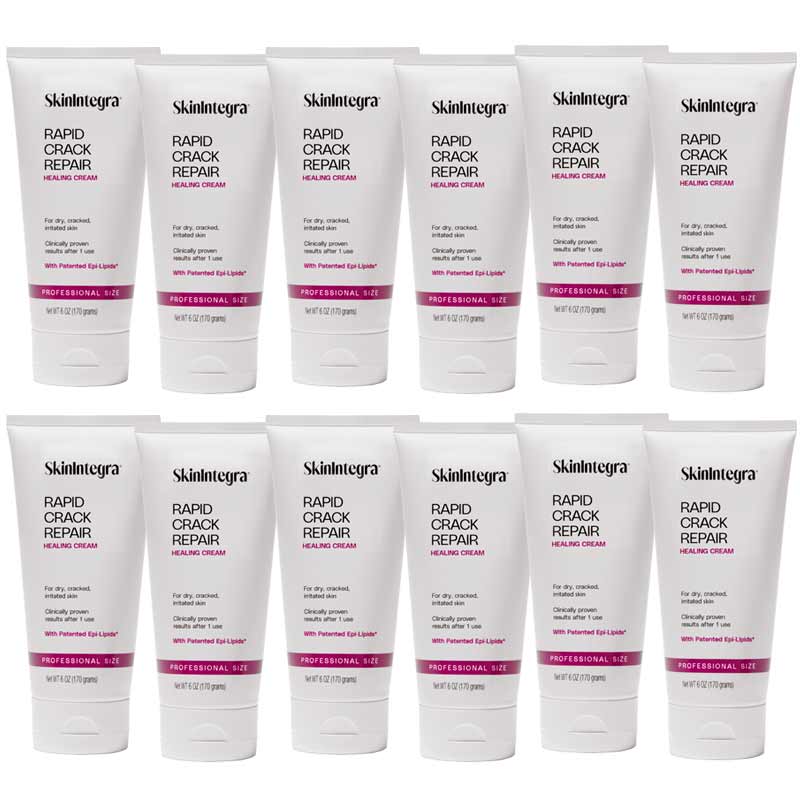If you live with diabetes, you know how much attention your feet demand. Even a small crack can quickly become painful — and dangerous. For many, cracked heels are more than a cosmetic nuisance: they sting with every step, split open repeatedly, and increase the risk of infection.
For decades, Vaseline (petroleum jelly) has been one of the most common recommendations for dry diabetic feet. Patients reach for it because it’s familiar, affordable, and protective. Many podiatrists still recommend it because it seals moisture in and reduces friction.
But is Vaseline really the best choice for cracked diabetic feet today? The answer is more nuanced than a simple “yes” or “no.” Let’s look at what Vaseline does well, where it falls short, and what new research tells us about better options for healing diabetic skin.
Why Cracked Heels Are a Problem in Diabetes
Cracked heels, or fissures, can be painful for anyone. But for people with diabetes, they carry much higher stakes.
-
Neuropathy (nerve damage): Diabetes can reduce sensation in the feet, meaning cracks may go unnoticed until they deepen or become infected.
-
Poor circulation: Restricted blood flow slows the healing process and makes skin more fragile.
-
Dry skin: Elevated blood sugar affects the body’s ability to retain moisture, leaving skin stiff and prone to splitting.
Left untreated, fissures can:
-
Deepen and bleed with everyday walking.
-
Allow bacteria and fungi to enter, raising infection risk.
-
Progress into ulcers — one of the most serious complications of diabetes, often requiring long treatments and sometimes surgery.
For many patients, cracked heels are an early warning sign of diabetic skin breakdown. They are not just uncomfortable — they signal that the skin barrier is compromised and needs urgent attention.
Learn more about diabetes foot complications
Why Vaseline Is So Popular
Vaseline has been trusted for more than a century, and for good reason. It’s one of the most widely used skin protectants in the world. As an occlusive moisturizer, Vaseline coats the skin to prevent water loss.

For people with diabetes, Vaseline offers several meaningful benefits:
-
Seals in existing moisture: Helps stop skin from drying out further.
-
Creates a protective barrier: Shields skin from friction and irritation.
-
Affordable and accessible: Found in nearly every home, pharmacy, or clinic.
-
Safe on intact skin: Rarely causes irritation and is non-allergenic.
This combination of safety, availability, and protective effect explains why many podiatrists continue to recommend Vaseline for diabetic foot care. Patients are already familiar with it, and it can help with mild dryness or prevention.
Why Vaseline falls short
While Vaseline protects, it doesn’t repair. For diabetic feet, that limitation matters.
-
No barrier repair: Vaseline does not restore the natural lipids (ceramides, cholesterol, fatty acids) that keep skin flexible and resilient.
-
Sits on the surface: It prevents water loss but doesn’t add hydration or penetrate the skin's surface layers.
-
Not effective for fissures: Deep cracks need active repair and hydration — Vaseline simply seals them over.
-
Greasy texture: Many patients dislike its heaviness, which can stain socks, sheets, and floors. Poor compliance often follows.
-
Infection risk if misused: Vaseline should never be applied between the toes, where it can trap moisture and increase fungal growth.
In short: Vaseline can help protect intact dry skin, but for the cracked heels common in diabetes, it’s not enough.
What Diabetic Feet Really Need: Barrier Repair, Not Just Moisture
Diabetic skin isn’t just dry — it’s structurally compromised. Effective care requires more than surface protection.
What diabetic feet need most:
-
Hydration: Restoring water to stiff, dry skin.
-
Gentle exfoliation: Smoothing thick, rough, or callused areas so skin can flex.
-
Barrier lipids: Replenishing ceramides, cholesterol, and fatty acids that help skin stay strong and elastic.
This is where the difference between occlusives (like Vaseline) and barrier repair creams becomes critical:
-
Occlusives (Vaseline): Work like plastic wrap, sealing in moisture but not adding or repairing.
-
Barrier repair creams: Hydrate, exfoliate gently, and supply the building blocks the skin needs to heal and resist future cracking.
Why barrier repair matters for people with diabetes
When barrier repair creams work, patients often describe it as if their skin is “finally drinking in water”. The change is visible and immediate: heels look softer, fissures start closing instead of reopening, and comfort returns with every step.
That’s because barrier repair doesn’t just soothe — it helps restore the skin barrier. With hydration, gentle exfoliation, and lipid replenishment, the skin becomes stronger and less prone to future cracking. Learn why skin barrier repair is essential in diabetic foot care
The Best Alternative to Vaseline for Diabetic Cracked Heels
If Vaseline isn’t enough, what works? The safest and most effective option is a clinically proven barrier repair cream designed for diabetic skin.
Why SkinIntegra® Rapid Crack Repair Cream Stands Out

Instead of layering products or relying on Vaseline’s limited effect, diabetic skin can now be treated with targeted barrier repair.
SkinIntegra® Rapid Crack Repair Cream was developed from diabetic skin research to address the specific needs of compromised skin. Its patented formula combines hydration, exfoliation, and barrier support in one step:
-
25% Urea + Lactic Acid: Powerful humectants that hydrate while gently exfoliating thickened skin. This balance avoids the irritation that can occur with stronger 40% urea creams.
-
Skin-identical lipids (ceramides, cholesterol, fatty acids): Rebuild the natural skin barrier so cracks close and stay closed.
-
Fast-absorbing, non-greasy formula: Improves compliance by leaving feet soft and comfortable without residue.
Clinically proven results
In an independent double-blind trial, SkinIntegra provided visible relief of dryness and cracks faster than a 40% urea cream, with significantly less irritation.
Safe for daily use
-
APMA (American Podiatric Medical Association) Seal of Approval.
-
Fragrance-free, dye-free, and suitable for even the most sensitive, compromised skin.
The bottom line: Instead of just coating the surface like Vaseline, SkinIntegra delivers hydration, exfoliation, and barrier repair — everything diabetic feet need to heal and stay healthy — in one product.
👉 Discover why SkinIntegra is the best cream for diabetic cracked heels
Daily Foot Care Routine for People with Diabetes with Cracked Heels
Healing cracks takes more than a single product — it’s about consistent daily care. Here’s a podiatrist-informed routine:
-
Inspect your feet daily. Use a mirror or ask for help. Look for cracks, redness, swelling, or bleeding.
-
Wash gently. Use lukewarm water and mild soap. Avoid soaking for long periods.
-
Moisturize with SkinIntegra® Rapid Crack Repair Cream. Apply twice daily to heels, soles, or fissured fingertips. Avoid between toes.
-
Wear supportive shoes and socks. Protect feet from friction and pressure; avoid barefoot walking.
-
Stay hydrated and nourished. Drink water and eat foods rich in omega-3s, zinc, and vitamin C.
-
Seek podiatry care. If cracks deepen, bleed, or fail to heal, consult a professional quickly.
👉 For more, see Essential Diabetic Foot Care: Foot Exams and At-Home Care.
FAQs About Vaseline and Diabetic Foot Care
Q: Should people with diabetes put Vaseline on cracked heels?
A: Vaseline is safe on intact skin but not effective for fissures. For cracked heels, barrier repair creams with urea and lipids are proven to work better.
Q: What cream is best for diabetic feet?
A: Diabetic-safe barrier repair creams with urea, lactic acid, and lipids are best. SkinIntegra® Rapid Crack Repair Cream is APMA approved and clinically shown to heal fissures faster than 40% urea creams, with less irritation.
Q: Is Vaseline safe for people with diabetes?
A: It’s safe to use on intact skin, but it doesn’t provide barrier repair. It should not be used between toes, where it can trap moisture and increase fungal risk.
Q: How do people with diabetes get rid of cracked heels?
A: Inspect daily, wash gently, apply a barrier repair cream like SkinIntegra twice daily, and wear protective shoes and socks. If cracks persist or worsen, see a podiatrist.
The Bottom Line
Vaseline has earned its place as a trusted protectant in diabetic foot care. It’s affordable, accessible, and safe — which is why so many podiatrists continue to recommend it. But for cracked heels in people with diabetes, protection alone isn’t enough.
What diabetic skin really needs is repair. SkinIntegra® Rapid Crack Repair Cream delivers hydration, exfoliation, and barrier strengthening in one clinically proven formula. That means faster healing, stronger skin, and simpler routines — without the greasy mess.
For patients living with diabetes, that’s not just comfort. It’s protection against the serious complications of cracked heels.





